This post may contain affiliate links.
Steak and eggs: sounds fancy but is surprisingly simple to make, is ready in 20 minutes and can be enjoyed as a weekend brunch or weeknight dinner. Turn it up a notch with our delicious Korean-inspired sauce and serve the perfectly cooked steak and eggs with quick-pickled vegetables. To make the servings stretch even further, whip up some crispy rice—it’s perfect for soaking up the sauce.
Easy One Pan Steak and Eggs
One reason this recipe is genius is that the steak and the eggs are cooked in the same pan. To ensure they’re both cooked perfectly (aka your ideal doneness) they’re cooked separately.
So while the steak rests, the eggs cook. Plus, we’re using a quick-cooking cut of steak—skirt steak. Which means all in, this recipe is ready in 20 minutes.
Cooking the eggs in a mixture of butter and steak drippings creates the most delicious fried eggs you can imagine.
And to achieve a gorgeous sunny-side up egg we like to baste, or spoon, the drippings in the pan up and over the eggs to help them set and cook through.
And finally, to balance out all of the savoriness, whip up a simple batch of quick-pickled cucumbers and red onion. Their tart crunch really seals the deal!
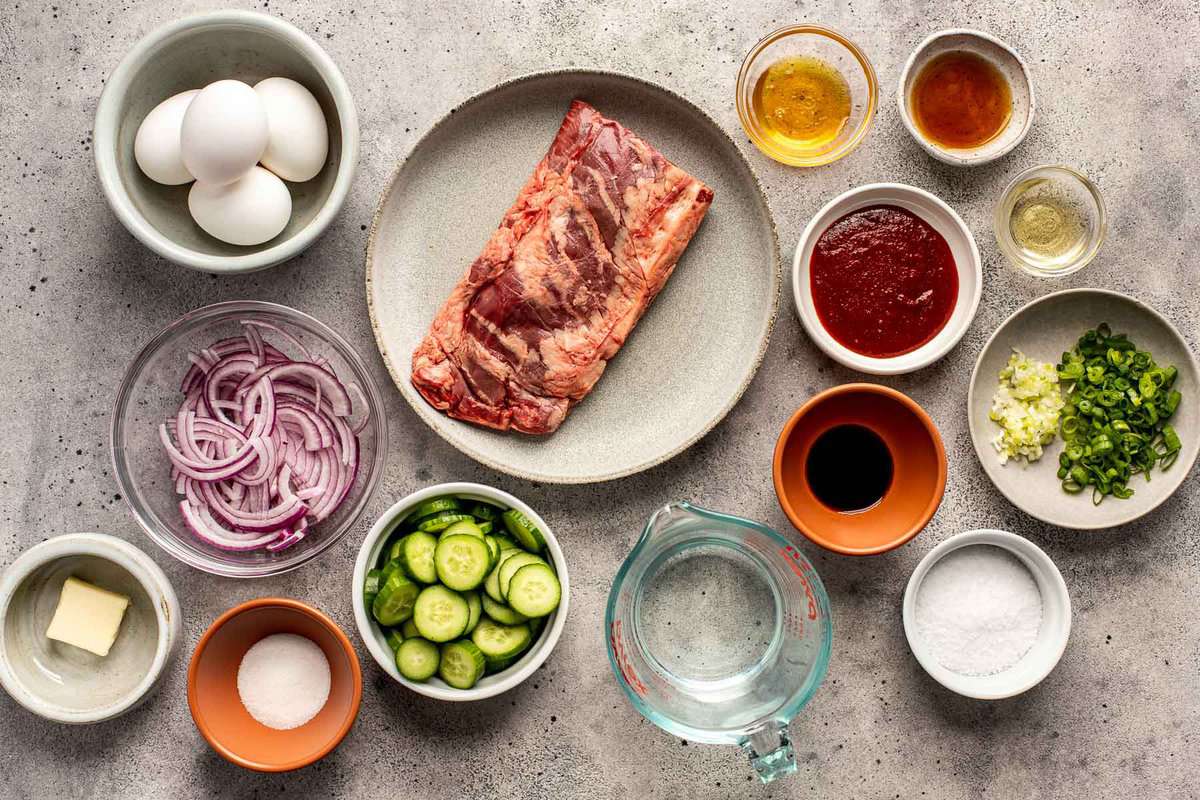
Ingredients Needed for Steak and Eggs
Steak: there are so many types of steak to choose from, but skirt steak is ideal for this recipe. It’s quick cooking and flavorful. If your butcher has the option, purchase an outside skirt steak (as opposed to inside).
Flank steak will also work here if you can’t find a skirt steak. Once cooked and rested, be sure to slice the steak against the grain. This is essential for this cut of beef! Learn more about how versatile skirt steak is and how to cook it!
Eggs: we recommend using eggs labeled as large as this is what we develop recipes with. Our cooking time and temp is specified for large eggs. If you use medium or small eggs, you will need to adjust your cooking time.
Vinegar: white distilled vinegar or rice vinegar is needed to make the pickled vegetables. You’ll also add a splash to the gochujang sauce.
Honey and Sugar: used to slightly sweeten the pickled vegetables and to balance the flavors of the gochujang sauce.
Sauces: to make the simple Korean-inspired sauce you’ll need gochujang, toasted sesame oil and soy sauce. Store the opened container of gochujang in the refrigerator. Use up that gochujang in this Korean Beef Stew or Korean Meatballs!
Scallions: the scallion whites will be used to make the Korean-inspired sauce while the greens will be reserved for garnish.
Red Onion and Cucumber: half of a red onion and a couple Persian cucumbers (or half an English cucumber) will make up the pickled vegetables.
Butter and Oil: you’ll need a high-heat cooking oil such as vegetable oil or avocado oil for the steak. Then you’ll need a tablespoon of butter to add to the drippings for cooking the eggs in.
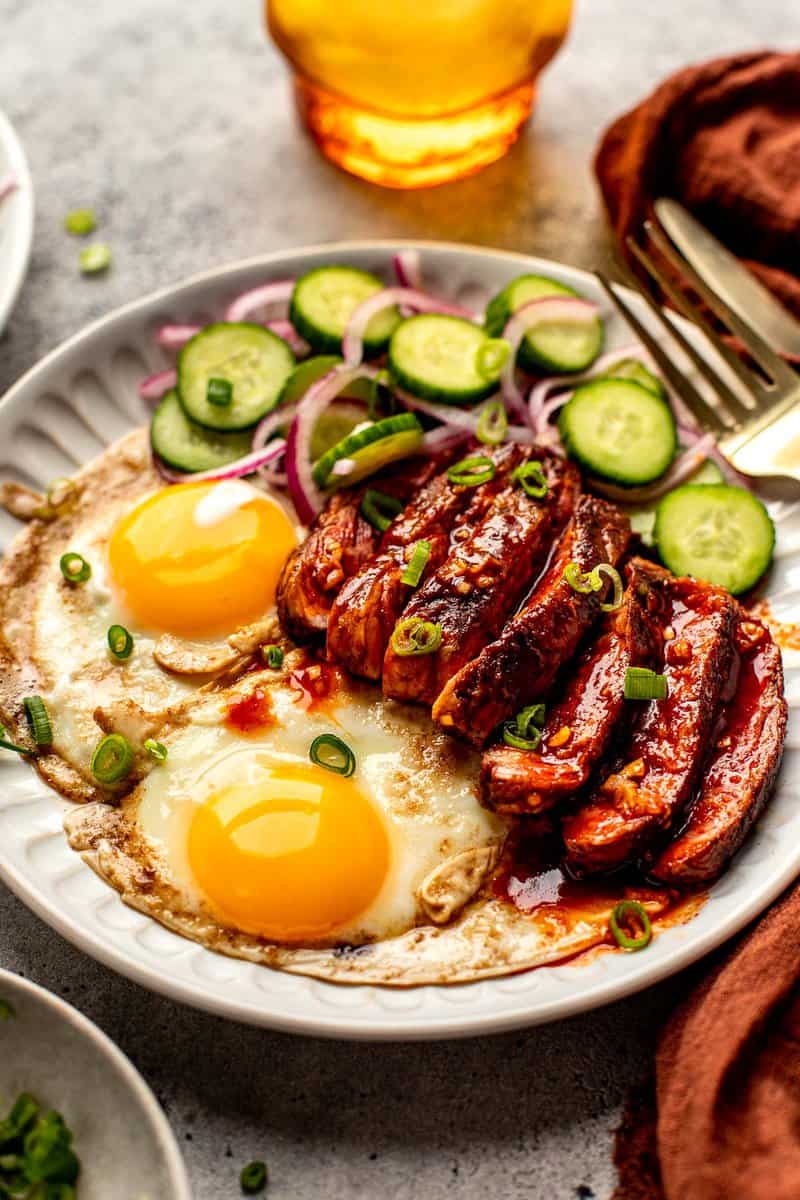
How to Make Steak and Eggs
Steak and eggs may sound intimidating, but it’s actually an incredibly easy meal to make.
- Make the pickled vegetables: combine vinegar, water, sugar and salt. Add the vegetables and set aside.
- Make the sauce: whisk together all of the sauce ingredients and set aside.
- Cook the steak: season the steak with salt and cook in a hot cast-iron skillet with oil. Transfer to a plate, brush with sauce and set aside.
- Cook the eggs: add butter to the steak drippings in the cast-iron skillet. Crack in the eggs and cook to desired doneness.
- Plate and enjoy: divide the steak, eggs and vegetables between two plate. Top with scallions and enjoy.
Tips for Cooking the Perfect Steak
- It’s imperative that you preheat the cast-iron skillet before adding the oil and cooking the steak. Preheating the skillet ensures it’s adequately heated and there are no cold spots in the pan. Together, this will help you develop a nice sear on the steak. Preheat the skill for about 5 minutes.
- Use a neutral-flavored high-heat cooking oil to cook the steak. We recommend avocado oil or canola. Learn more about cooking oils and smoke points.
- Cook by temperature, not time. We highly recommend using an instant-read thermometer (this is our favorite) to determine the doneness of your steak.
- Understand the temperature related to your desired doneness. Check out our article that’s all about internal temperature cooking guidelines.
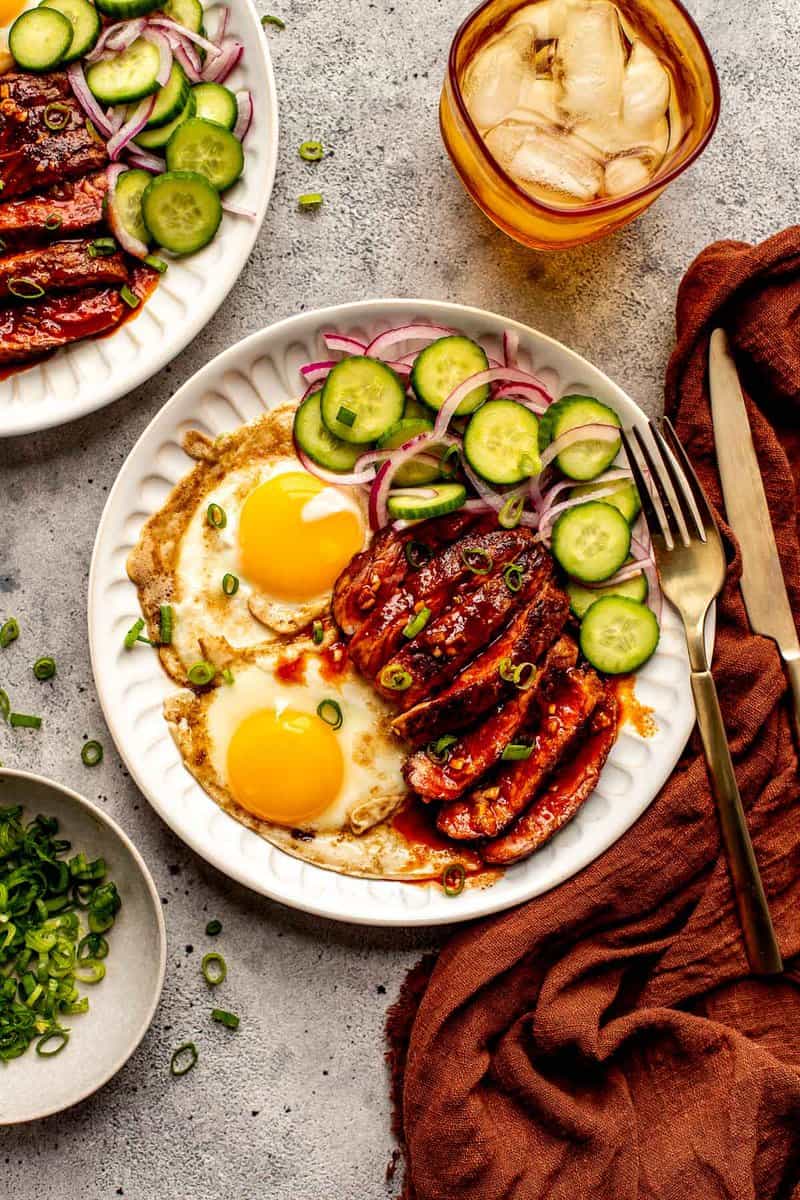
Variations
Skip the gochujang sauce and instead serve steak and eggs with our Chimichurri sauce.
Go the mexican route and top the steak and eggs with our Roasted Salsa Verde. Serve with warm corn tortillas, cilantro and hot sauce.
Keep it simple with no sauce at all. Serve everything with your favorite hot sauce and a side of toast or hashbrowns.
Make it even more decadent and serve our Pan-Fried King Oyster Mushrooms with the steak and eggs instead of the pickled vegetables.
Serving Suggestions
If you’re serving this for dinner, pair it with out Healthy Cornbread or Gluten-Free Cornbread.
Fill out the brunch menu and serve this meal with our Blood Orange Mimosas and Savory Citrus Salad.
If you aren’t keen on pickled vegetables, keep the Korean theme going and serve the steak and eggs with our Spicy Korean Cucumber Salad.
Don’t want to go to the effort of making crispy rice? Try our Cilantro Lime Brown Rice.
FAQ
It’s important to allow a cooked steak to rest for a few reasons. One, you want to capture that carry-over cooking so it reaches your ideal internal temperature (steak will increase in temperature 3-5 degrees after cooking, so remove the steak from the cooking element just shy of your desired doneness).
Secondly, resting a steak before slicing allows the muscle fibers to relax. This allows the juices to redistribute to the edges of the steak and makes for a more evenly juicy steak.
It’s important to rest a steak before slicing, so to keep it from getting cold we recommend tenting the steak with a sheet of foil. Avoid tightly sealing the foil around the plate as this will steam the steak and soften any crispness you achieved. Just a light tent will keep the steak warm.
The tri-tip cut, also known as bottom sirloin steak, triangle roast, California cut, or Santa Maria steak, comes from the very bottom tip of the sirloin. It can be sold as a tri-tip roast or cut down into tri-tip steaks.
Tri-tip roasts and steaks are both lean cuts. The roast has a triangle shape to it, while steaks are cut down into a rectangle shape. Both cuts are juicy and flavorful and are best cooked on the grill or roasted. We like to slice roasted tri-tip and make tri-tip sandwiches!
For more info, check out this article to learn the difference between tri-tip and brisket.
No, it is not recommended to cook an egg on top of a steak. Cook them separated for the best results and for food safety.
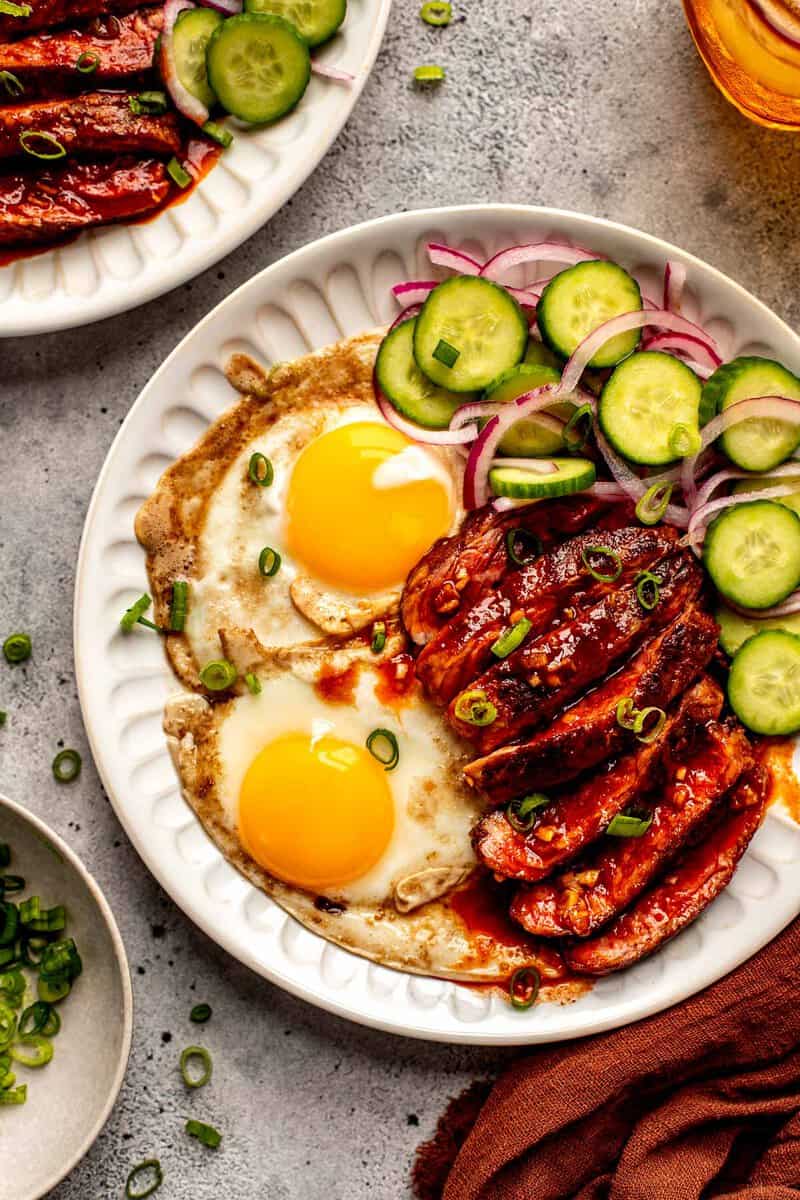
Storage and Reheating Leftovers
Store leftovers separately in airtight glass containers in the refrigerator. Stored this way, leftover cooked steak will last up to 3 days, the pickled vegetables will last up to 2 weeks, and the sauce will last up to 2 weeks. If you have leftover eggs, we don’t recommend storing them.
Gently reheat the steak in a skillet over low heat or in the microwave in 30-second increments on 50 percent power until warmed through.
Reheat the sauce in the microwave for about 30 seconds until warmed through. Cook fresh fried eggs to serve with any leftovers.
More Steak Recipes to Try
We love a perfectly-cooked Top Sirloin and we’ve got 4 ways for you to do it!
If you’re looking to play around with reverse searing, try our recipe for Reverse Seared Steak.
Cook up a tri-tip for our Italian Tri-Tip Sandwich. It’s the perfect picnic meal!
For a fun date-night or appetizer party, make Beef Negimaki. These Japanese Steak and Scallion Rolls are to die for.
Another great date night dinner: pan-seared filet mignon.
If you love a skirt steak or flank steak, then you’ve gotta try our Tacos al Carbón. They featured charred chipotle flank steak and a charred scallion salsa.
Steak and Eggs
Description
Save This Recipe!
Video
Ingredients
Pickled Vegetables
- ½ red onion, thinly sliced
- 2 persian cucumbers, sliced
- ½ cup white vinegar
- 1 tablespoon white sugar or honey
- kosher salt
Gochujang Sauce
- 1 ½ tablespoons gochujang (1 tablespoon + 1 ½ teaspoons)
- 1 tablespoon honey
- 1 tablespoon rice vinegar or white vinegar
- 1 tablespoon toasted sesame oil
- 1 ½ teaspoons low-sodium soy sauce
- 2 scallions, white parts minced, green parts sliced
Steak
- 1 tablespoon avocado oil or vegetable oil
- 12 ounces skirt steak or flank steak
- 1 tablespoon unsalted butter
- 4 large eggs
- Crispy Rice or cooked rice for serving, optional
Instructions
Pickled Vegetables
- In a medium bowl, whisk together ½ cup vinegar, ½ cup water, 1 tablespoon sugar, ½ teaspoon salt. Add cucumbers and onion; stir to combine then set aside.
Gochujang Sauce
- Whisk together 1 ½ tablespoons gochujang, 1 tablespoon honey, 1 tablespoon vinegar, 1 tablespoon sesame oil, 1 ½ teaspoons soy sauce and scallion whites; set aside.
Steak
- Preheat a cast-iron skillet over medium-high heat for 5 minutes.
- Add 1 tablespoon avocado or vegetable oil to skillet and heat until shimmering.
- Cut steak into two even pieces; pat dry with paper towels then season with 1 teaspoon salt.
- Add steak to skillet and cook until deeply browned on both sides and internal temperature reaches 125ºF, about 3 minutes per side for medium rare. (See recipe notes for different temperature doneness.)
- Transfer steak to a plate and brush with some of gochujang sauce; let rest 5 minutes.
- Meanwhile, add 1 tablespoon butter to cast-iron skillet (with steak drippings) set over medium heat.
- Once butter has melted and is starting to bubble, carefully crack 4 eggs into skillet. Cook eggs, carefully tilting skillet so oil pools. Use a large spoon to scoop oil up and spoon over egg whites. Continue basting until whites are completely set and yolk is cooked to desired doneness, 2–3 minutes. (If you like a runny yolk, avoid spooning oil over yolks. If you like a firmer yolk, spoon oil over entire eggs.)
- Slice steak against the grain and transfer to plates; brush additional sauce over steak slices. Add eggs and pickled vegetables to plate; sprinkle scallion greens over top and serve.
Equipment
Notes
It should temp 120–125ºF (49–52ºC) after resting Medium-rare: remove from heat at 120–125ºF (49–52ºC)
It should temp 125–130ºF (52–54ºC) after resting Medium: remove from heat at 130–135ºF (54–57ºC)
It should temp 135–140ºF (57–60ºC) after resting Medium-well: remove from heat at 140–145ºF (60–63ºC) (recommended USDA temperature)
It should temp 145–150ºF (63–65ºC) after resting Well-done: remove from heat at 150–155ºF (65–68ºC)
It should temp 155–160ºF (68–71ºC) after resting Buying Steak If your butcher has the option, purchase an outside skirt steak (as opposed to inside). Flank steak will also work here, but we prefer a skirt steak.
Nutrition
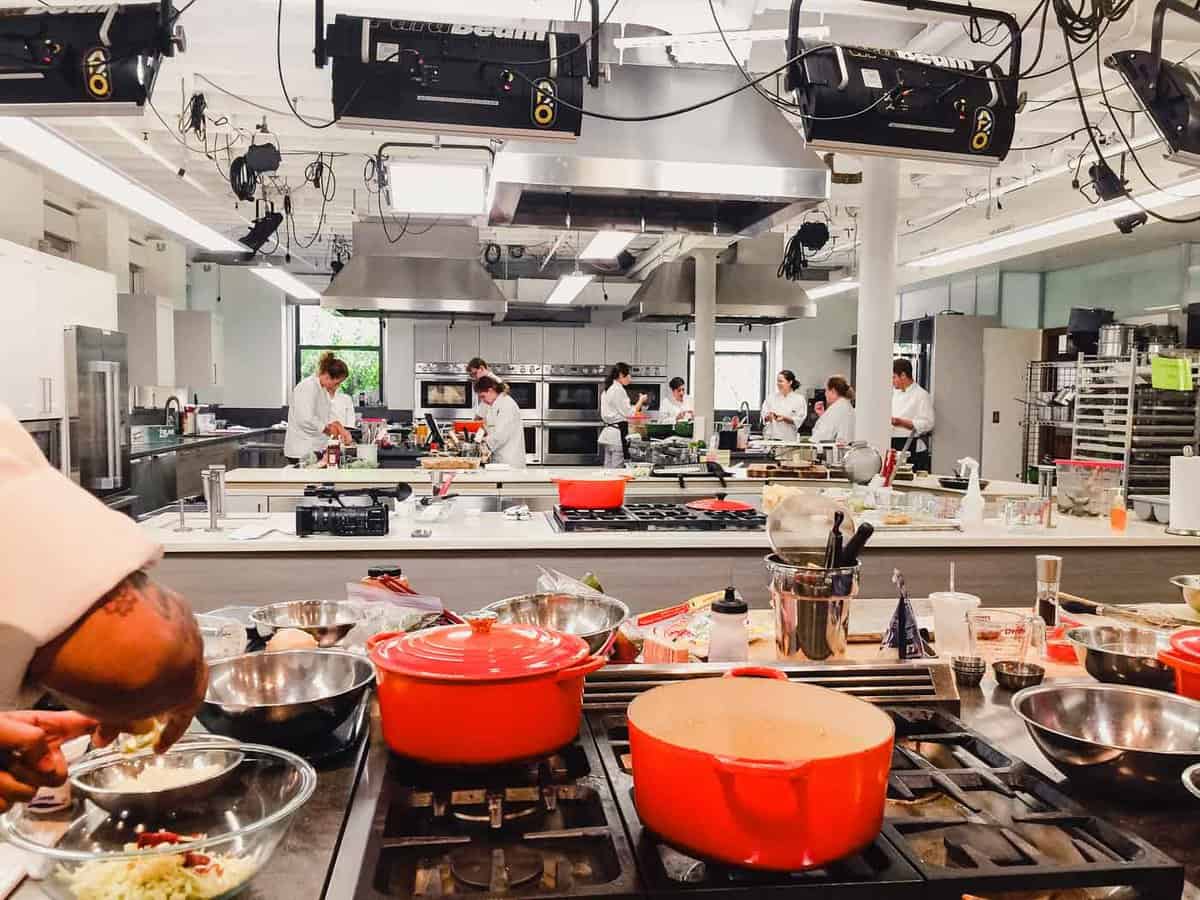
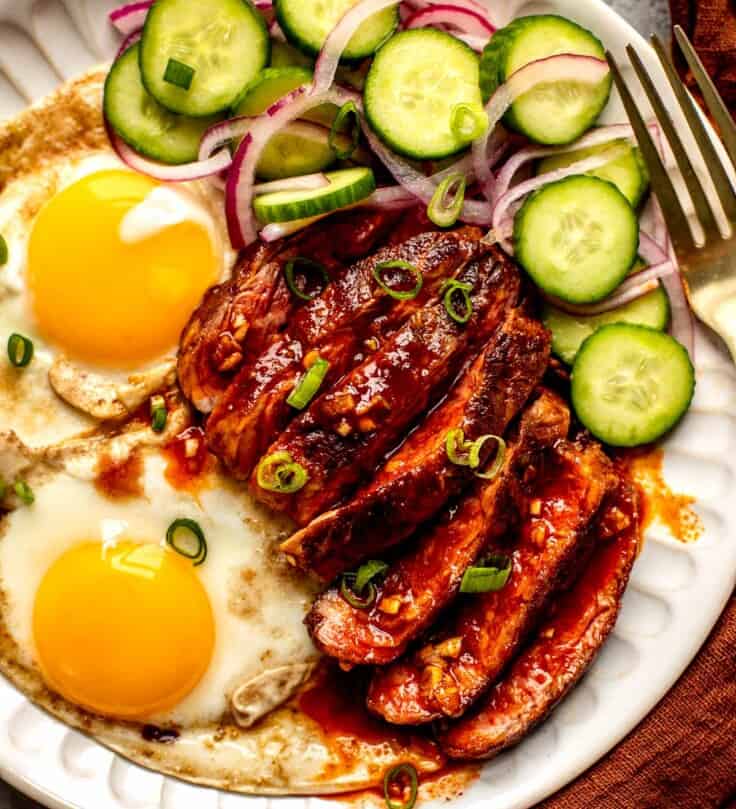
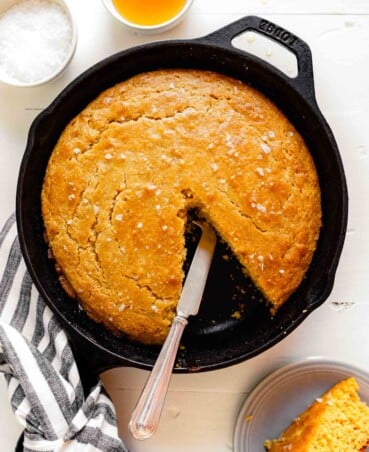
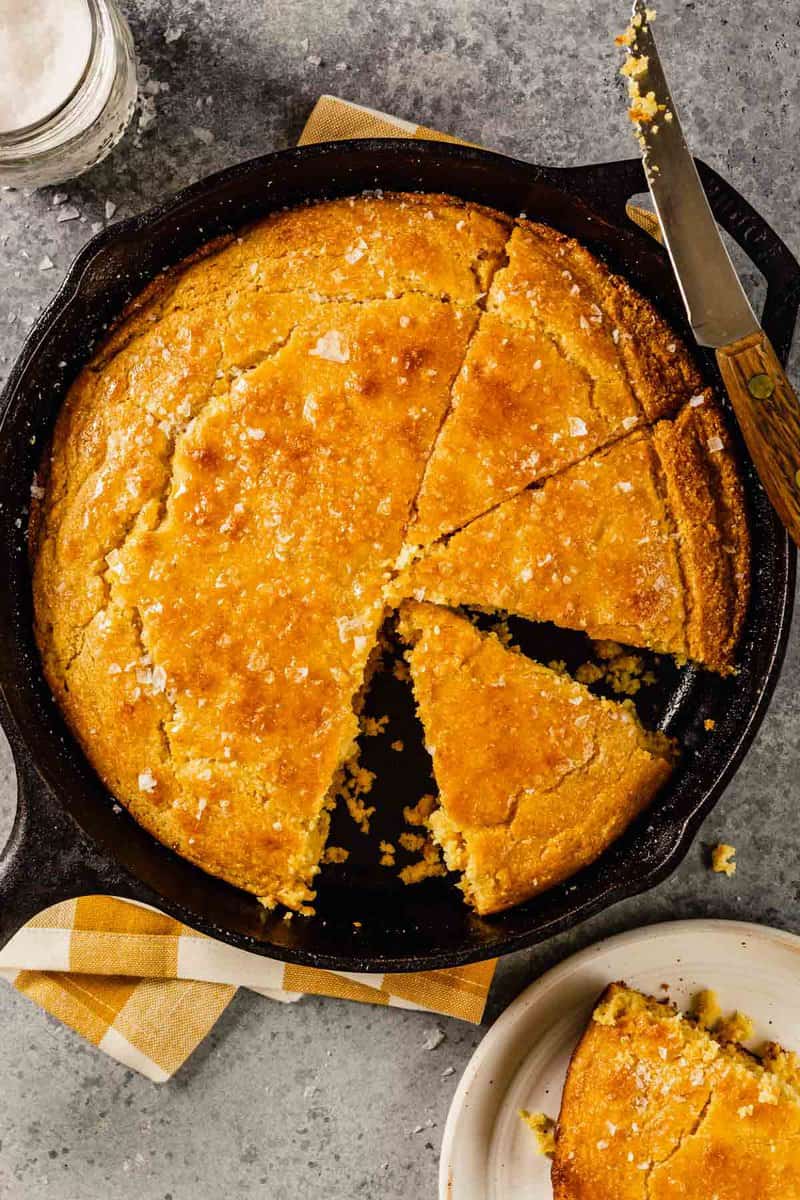
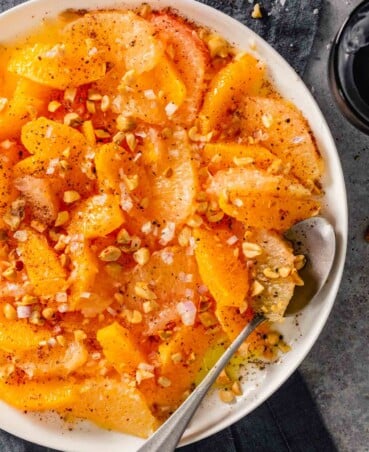
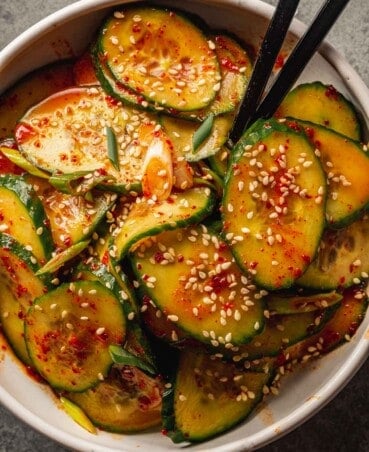
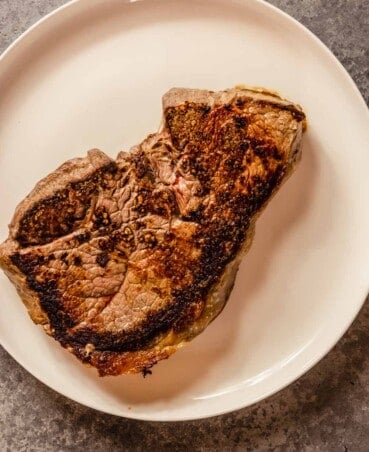
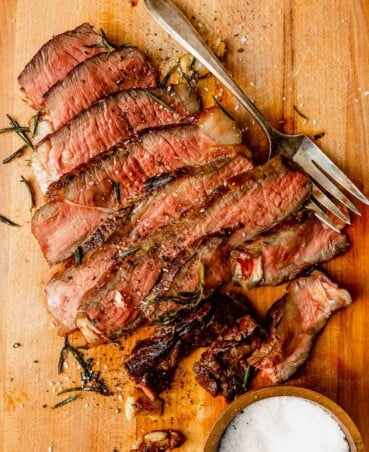
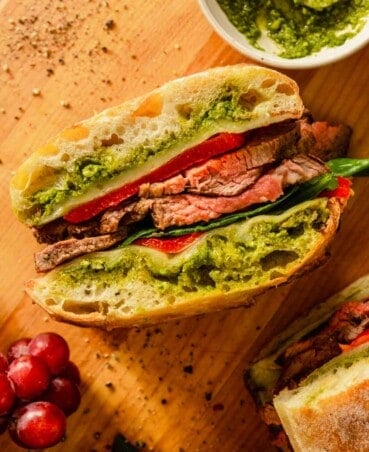
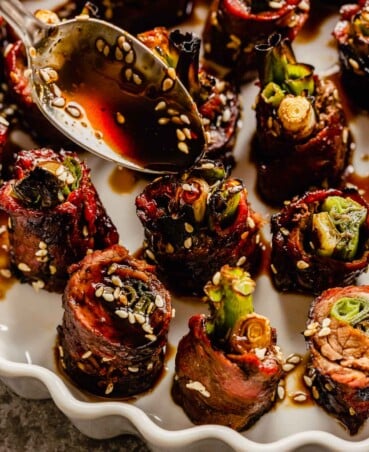
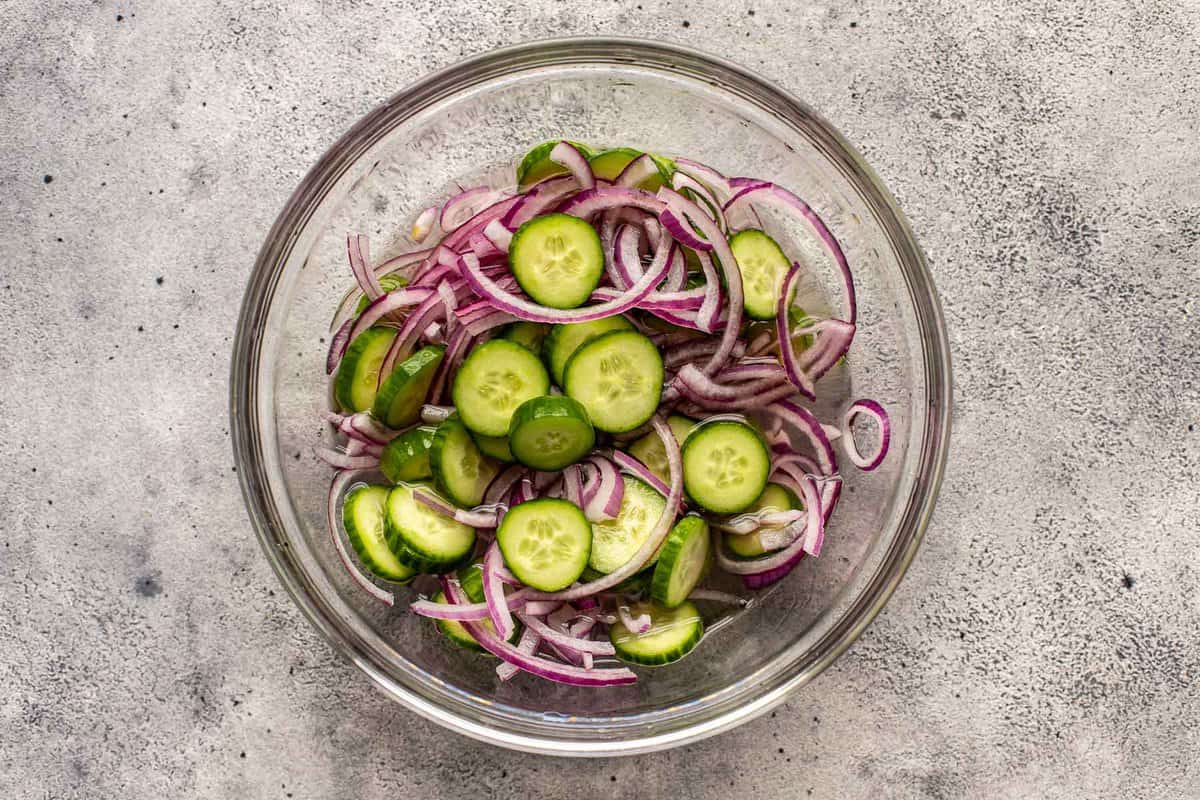
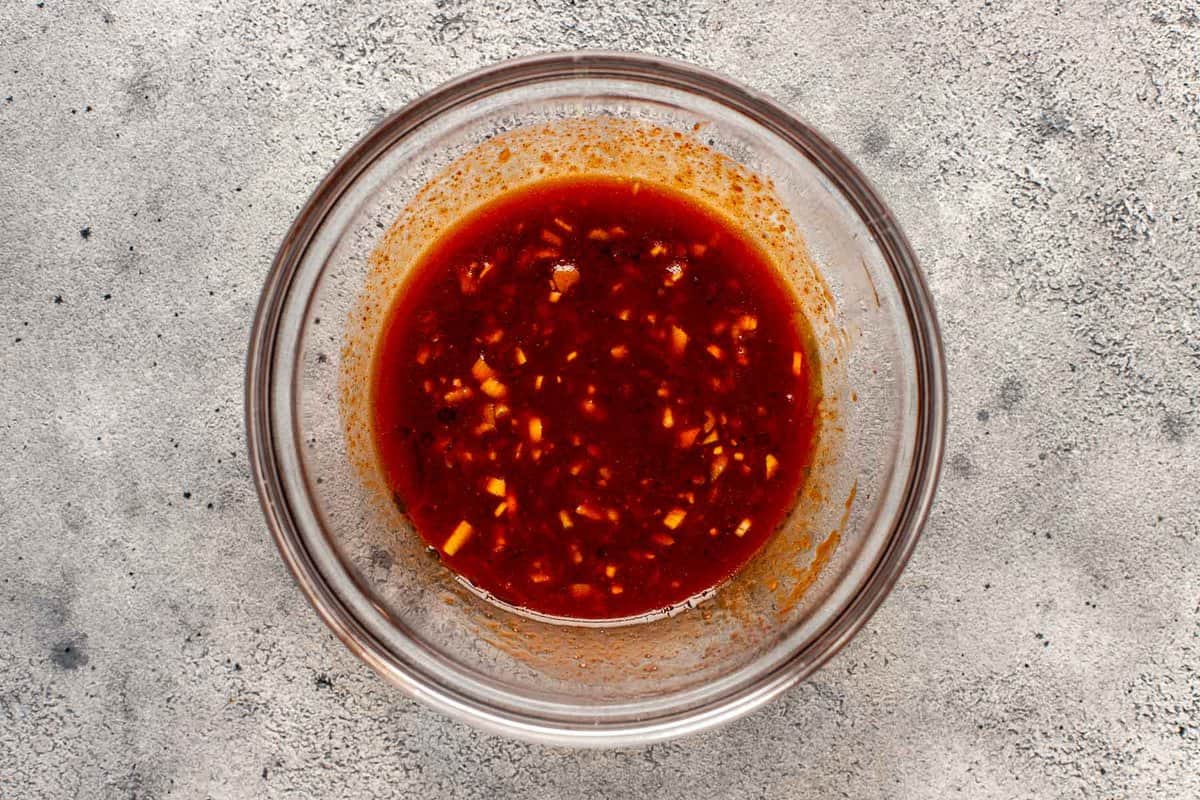
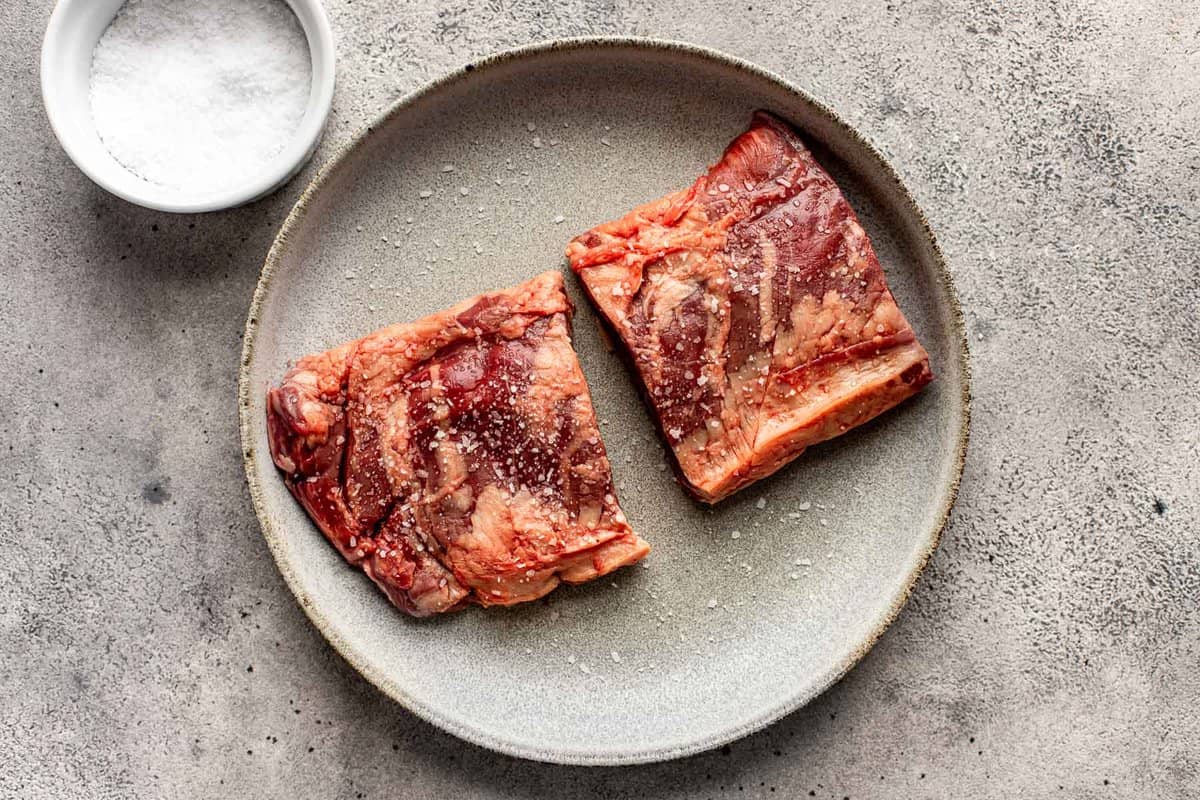
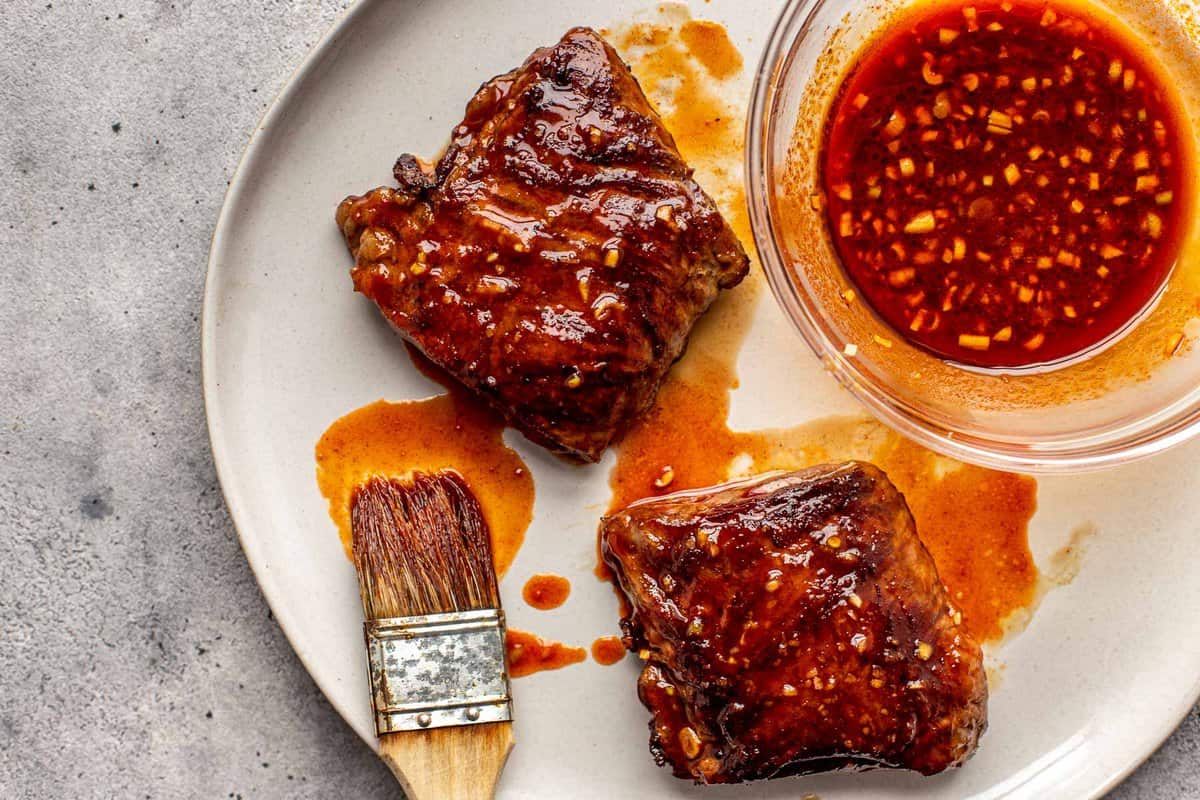
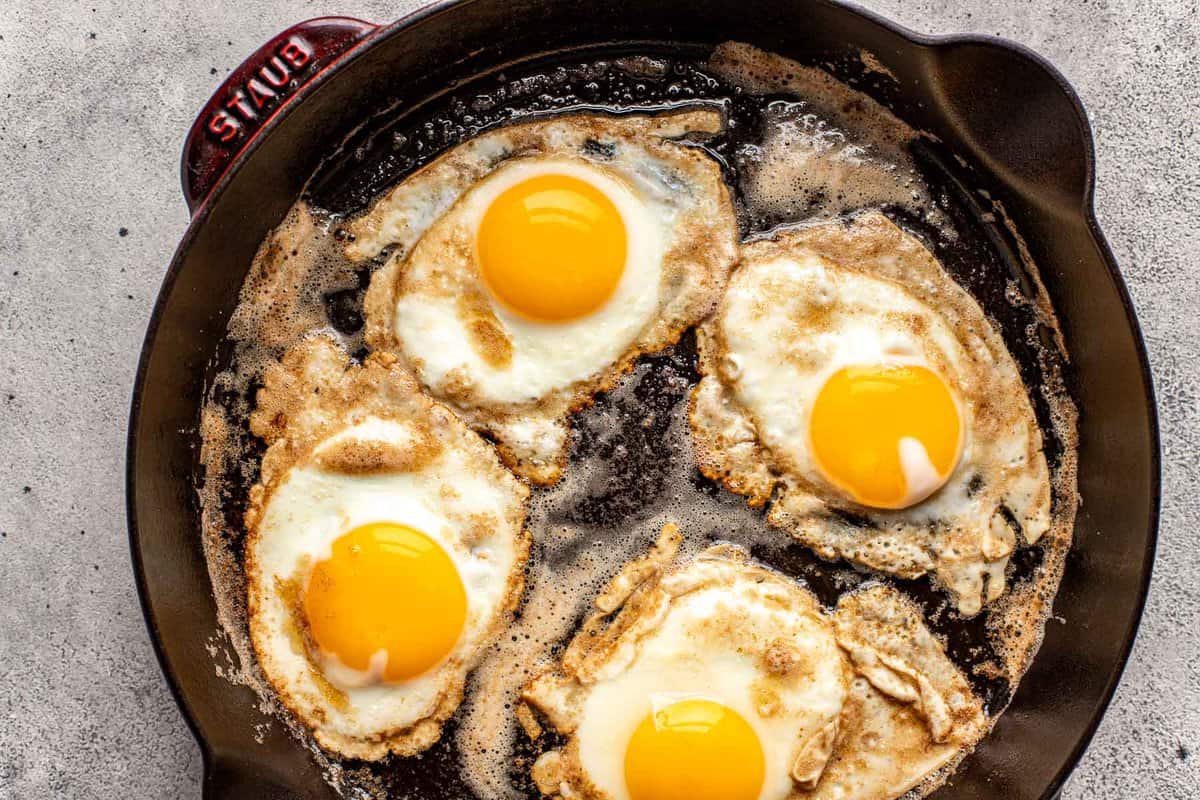
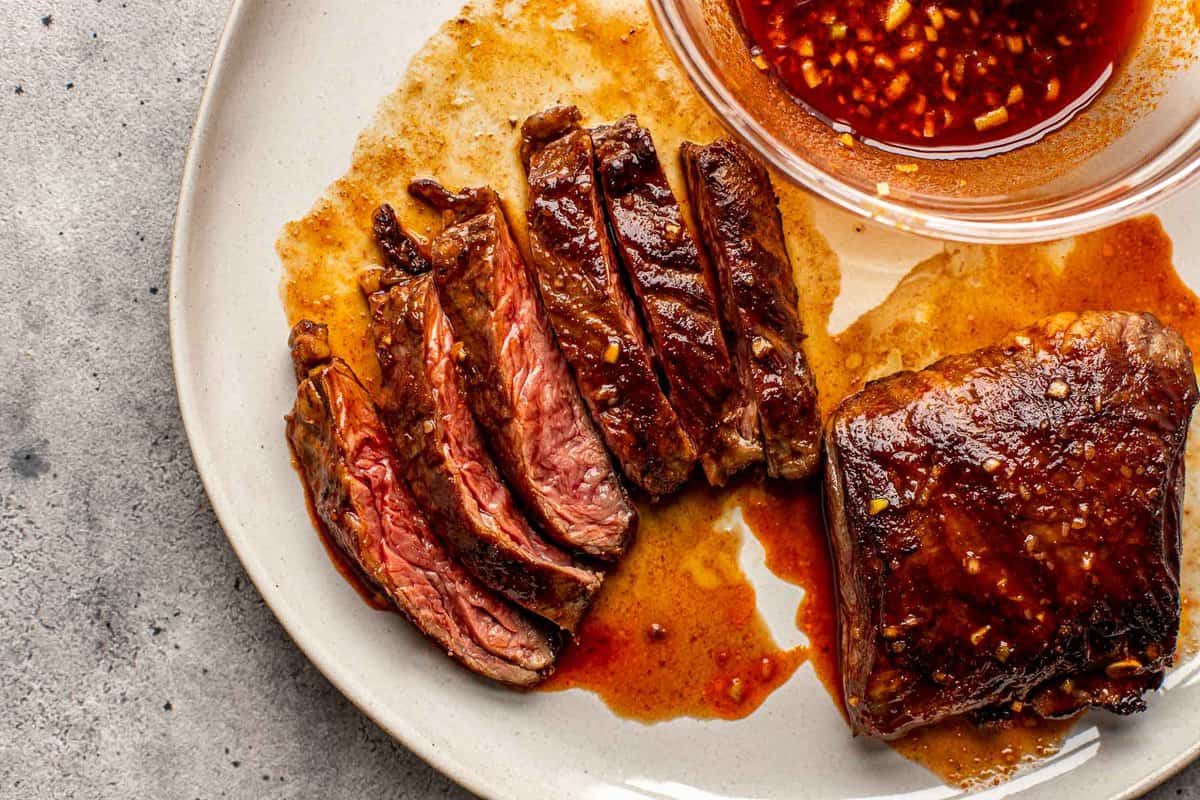
Been looking for a great steak and eggs for so long. This is it!